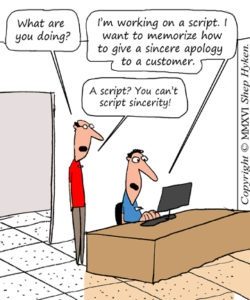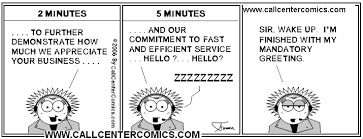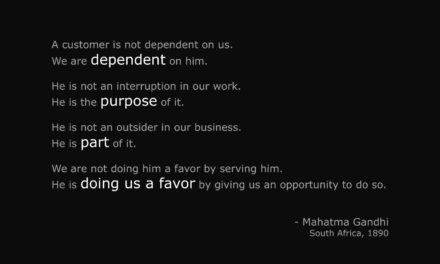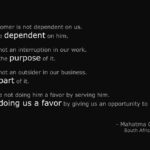We’ve all experienced the eye-rolling fatigue that engulfs us when we dial in to a help desk or sit down at a restaurant and the service provider belts out the same tired old lines that have been hardwired in their internal systems making them robotic. Plastic enunciation of words, plastic smile and plastic tone of voice that is as discernable in person as it is on the phone. “What would you like to drink Meeehhmmm(Ma’am)”, “Thanks for calling XYZ we’re happy to be of service to you” or the old and tired disembarking script “Thank you for flying with XYZ airlines, hope you enjoyed your flight” Not an ounce of feeling, warmth or passion in these expressions.
As customers, we persevere through these interactions, willing them to end at the soonest, so that we may get on with the business that brought us to the establishment or had us make the call in the first place. The officers on duty are doing their job and a customer service audit if applied, would not reveal noncompliance. Far from it actually; for the scripts are being well followed and delivered based on hours of drilling, and increased perfection of having delivered the same customer after customer. And as we all know ‘practice makes perfect’. In this case it delivers mindless perfection.
On the customer experience Richter scale, perfected scripts rank an all-time low of one. They do not make for customer experience excellence and do not provide for delightful customer interactions. Customers instead feel like batch processed stats all passing through the same ‘machine processed’ system.
A real challenge presents itself towards achieving customer experience excellence where both standardization and personalization are equally important. Developing and implementing service standards is a key tenet of service excellence, as is providing personalized and individualized service. Paradoxical isn’t it?
The dilemma persists with several parameters that need to be explored including:-
- How to maintain a decent and standard way of delivering service without making robots out of the service givers.
- How to balance between saying the same thing over and over again without fatigue and flatness kicking in.
- How to communicate in a similar format with numerous customers over time whilst recognizing that each customer will be interacting with you for the first time.
Customers totally abhor overly scripted service. It in no way works towards having them emotionally engaged with the brand. Scripted responses turn customers off each time every time, and should be struck off the customer service training manual. What works instead and goes with the flow of the needs of today’s customer, is to have teams totally know and understand the company policies, procedures and guidelines, from which the company cannot and will not deviate.
With this in mind, the service deliverers will have the autonomy to read the customers mood, assess the situation, and customize as necessary. If greetings are the first thing on the customer reception code, then so be it, have the agents greet customers in as polite and courteous a manner as they deem fit. If the service failure recovery procedure involves apologizing and empathizing with the customer, then this should be at the discretion of the team member involved to ensure they get it done. This will allow for a variety of custom made responses that align to the situation at hand, and have the customer feel their needs have been met.
And whereas this may be easy to preach, it is by no means easy to implement. When human beings are set free to fly in the direction of their best thoughts, then the outcomes will be as diverse as the individuals in the group in discussion. This poses a real risk of agents feeling that they did what they thought was best with disastrous aftermaths; as common sense as we all know it, is not common to everyone.
The antidote to this though, is to first and foremost invest in training, re- training and then training again. Opportunities need to be created for sharing of experiences by team members to have them think through all possible customer scenarios and pre-prepare possible responses in their own customized ways. This will do wonders towards delivery of authentic customer service. And of course the hiring of customer facing personnel, needs to be well cast, with those with natural tendencies towards the desirable 5 C’s of customer service reps – being caring, compassionate, communicative, confident and having composure taking center stage. This will provide a stable base upon which to load on the added responsibility of delivering standard but unscripted customer service excellence.
Customer Service Excellence – -+To script or not to script…..who gets to decide? You do!










